I want to build a steer-by-wire system and I was wondering what is better for precision a stepper motor or a DC Motor to control the wheels of the car. I tend to want to use DC and make it a Servo in order to make it more precisise.
-
3Steppers *seem* precise - right up until you miss a step ... then you're lost without feedback. If you add feedback then you may as well use a geared DC motor for greater simplicity & power. – brhans Apr 13 '21 at 20:59
-
More important than all that is skid. – DKNguyen Apr 13 '21 at 21:01
-
Wouldn't that depend on how the motor will control the steering. Is it for a car or a bicycle? Can you be any more precise in your question to give better answers? – Justme Apr 13 '21 at 21:05
-
Which is heavier, a rock or a boat?It all depends upon which rock and which boat doesn't it? – Math Keeps Me Busy Apr 13 '21 at 21:21
-
Welcome to the site. This is one line that asks for mountains of effort in reply. The site is not for free personal tutoring and you can quite easily research this on the internet. Please edit your question and detail you already know, show all that you have discovered for yourself on the subject. – TonyM Apr 13 '21 at 21:47
-
One thing steppers don’t deal with very well is resisting outside force. I would think for steering this dynamic behavior would be important, which would favor a motor. – hacktastical Apr 13 '21 at 22:27
-
Stepper motors have cogging magnetics, which provide some amount of holding force between steps. But that cogging force is limited; by itself a stepper motor cannot know whether the load has skipped a step or whether it is where it is supposed to be. – MarkU Apr 13 '21 at 22:49
-
What kind of steering mechanism? Rack-and-pinion? What about independent left-and-right traction drive on "caterpillar" tracks like a backhoe uses? Or is this a boat steered by a rudder? What vehicle? Max payload? Speed? Torque? Required stopping distance? Required positional accuracy? Will it travel through any shared right-of-way? What hazards must it negotiate (birds, whales, pedestrians, cars, lawyers, ordnance, volcanoes?) – MarkU Apr 13 '21 at 22:50
-
It's unclear whether you intend to control an RC scale model, a quadcopter, a passenger automobile, a cargo container ship, a backhoe, or some other vehicle. But *control theory* is essential for designing all of the various feedback / feedforward / servo systems that would form the core of any drive-by-wire or fly-by-wire or sail-by-wire system. Don't put the cart before the horse: there's no good way to choose the best motor when the vehicle is undefined. – MarkU Apr 13 '21 at 22:50
-
Servomotor would be the "best." But a stepper may work. The servomotor could be DC or AC (that is not terribly important). – user57037 Apr 14 '21 at 05:26
3 Answers
I would have to go with a servo motor. Possibly on a worm gear driven rack and pinion. The servo control system, I would include absolute positioning sensors, (opto wheels) so that the motor control optic wheel is fallows the steering wheel optic wheel with precision. I wouldn't recommend a potentiometer as a command potentiometer, because of mechanical failure and dust might interfere in its future operation. I would also include limit switches so that the motor travel of the wheel never causes mechanical damage.
- 319
- 1
- 8
Your question doesn't make it clear but I am assuming that you want to motorise the steering rather than provide power to drive the vehicle.
Stepper
- Most stepper systems don't have any position feedback. This means that the control system won't know if it has lost position due to a knock or high resistance while driving.
- On power-up the steering would need to do a referencing movement to learn its initial position. Typically this might mean turning fully left until a switch is activated and then moving back a certain number of steps to the central position.
- You can then apply a degree of steer by stepping a certain number of steps in the right direction.
DC motor
- If using a DC motor then you need to implement some type of servo action and control. This means that position feedback is required and a servo amplifier is driven to adjust the steering.
- The servo actuator below takes a 2 ms clock signal with variable duty cycle. Typically they turn 180° with 0.5 s pulse width going fully to one side and 1.5 ms going fully to the other extreme.
- The electronics to drive the motor are built in as is the feedback system which may be as simple as a potentiometer which is driven on the same shaft as the output lever.
- The motor driver will adjust the current required to move the actuator to the required position.
- The servo will "know" if it has been knocked out of position and will self-correct.
Figure 1. A hobby servo actuator such as used in RC models. Image source: Introduction to servos.
Your question gives no idea of the scale of RC car you are creating but larger servo actuators are available.
I would chose the DC motor servo actuator.
- 168,990
- 12
- 186
- 385
- Well, I can have my cake and eat it too, only for ¥25! : )
For reading materials, I would recommend this newbie friendly tutorial:
DC Motors and Stepper Motors used as Actuators - Electronics Tutorials
- For learning by getting your hands dirty, I would recommend to start with the very popular cheapy US$1 L298N DC Motor Driver Module. L298N can actually drive two DC motors and also one stepper motors, though there are better drivers for stepper motors, eg. A4988 Micro Stepping Stepper Motor Driver Module.
- For steer-by-wire motors, you might need big current drivers. I would recommend this also cheapy BTS2760/BTN7971B max 40A+ DC motor driver.
- I don't recommend to use or start with stepping motors, because they are too weak to drive cars, though they are very precise to do 3-D printing applications.
References
- 2,766
- 1
- 9
- 17
-
1The question is, "what is better for precision a stepper motor or a DC Motor to control the wheels of the car?" I don't think you have answered this. – Transistor Apr 15 '21 at 18:34

